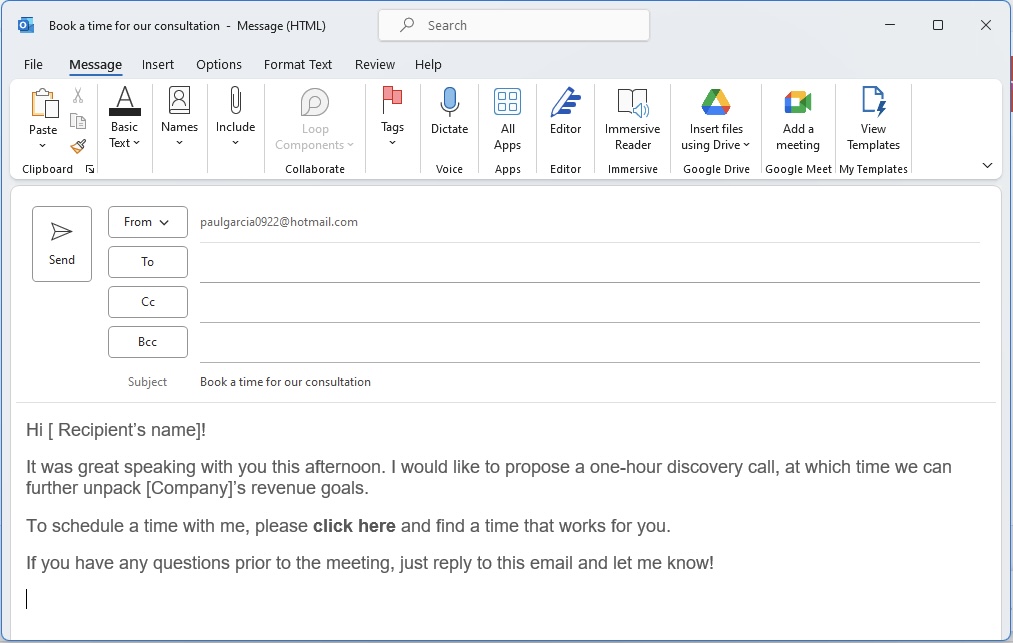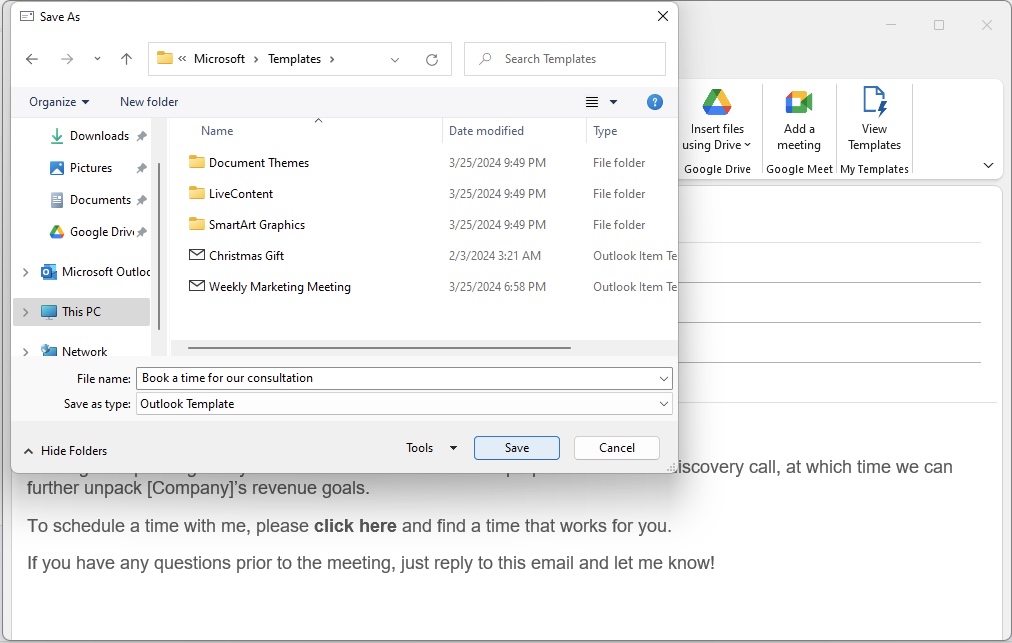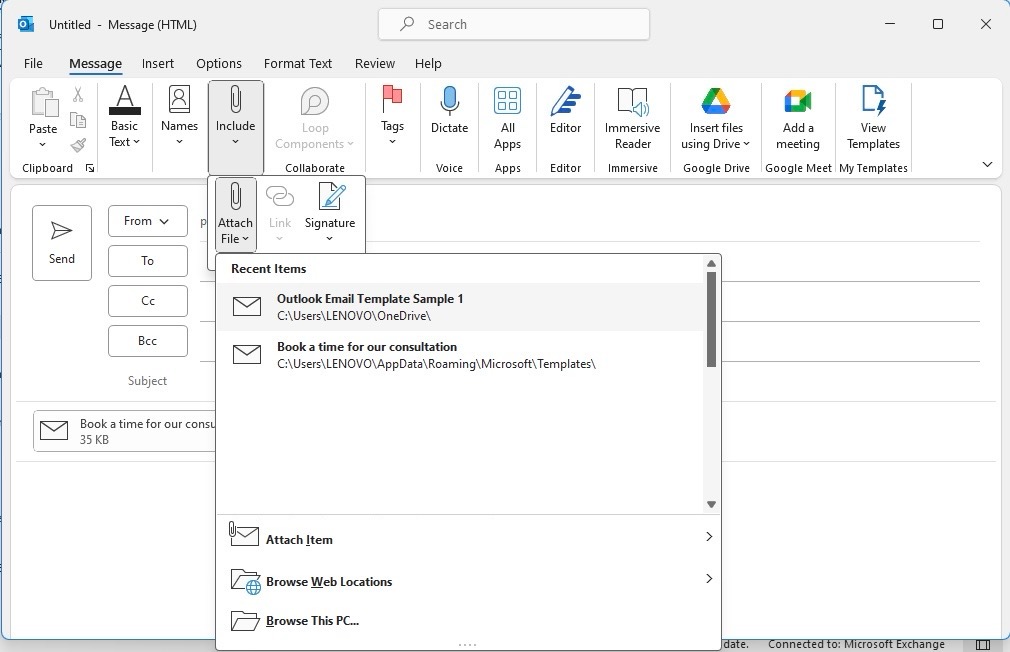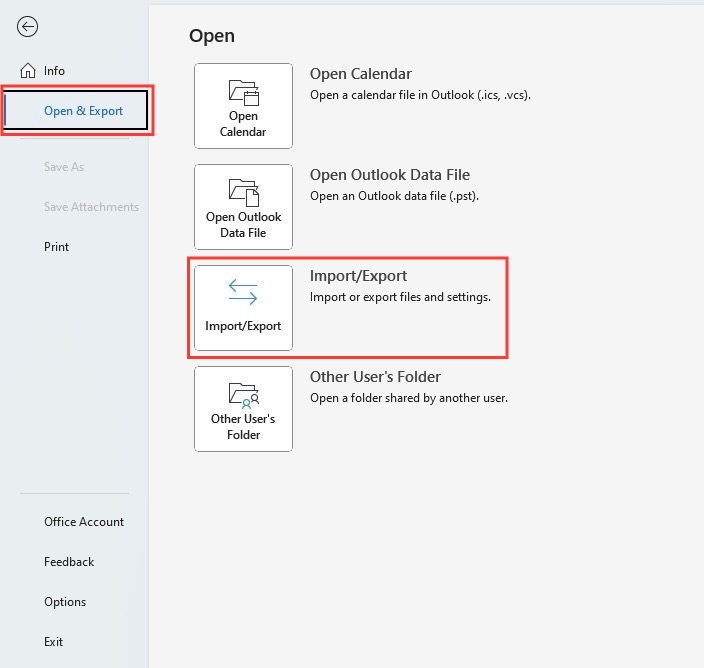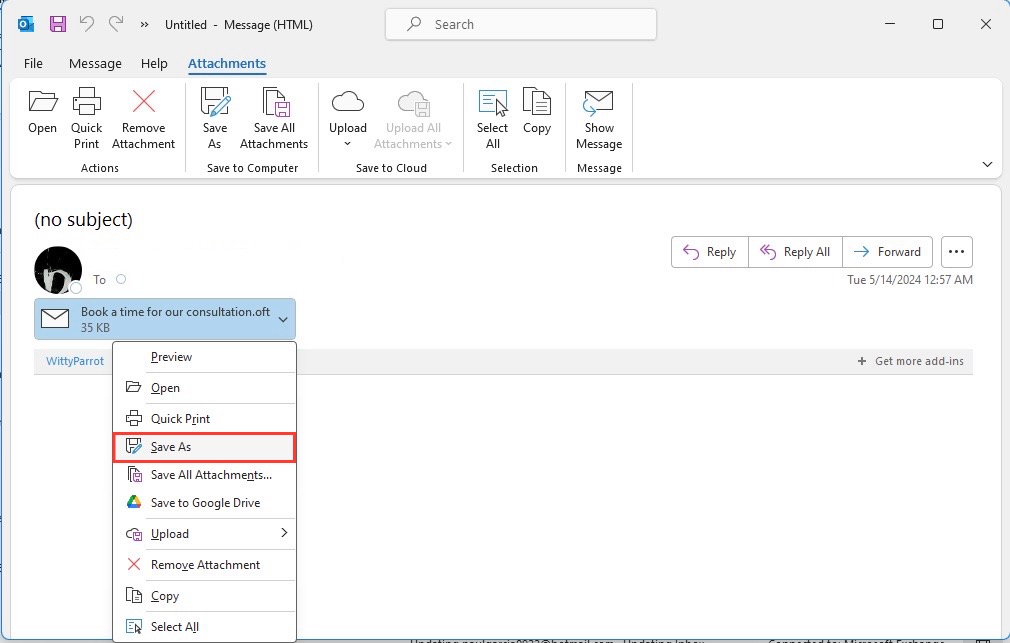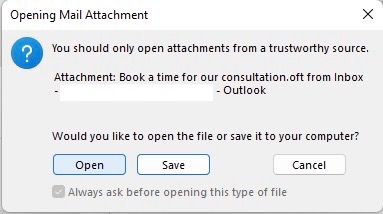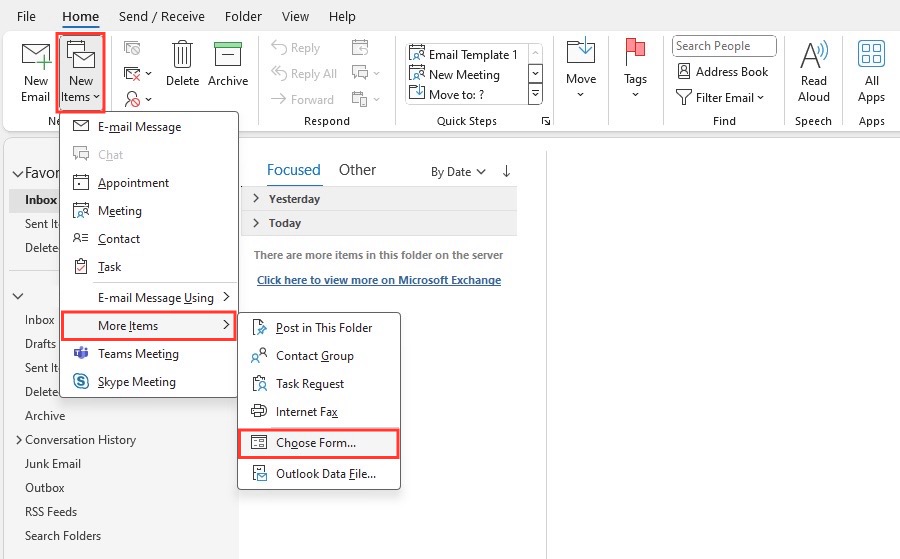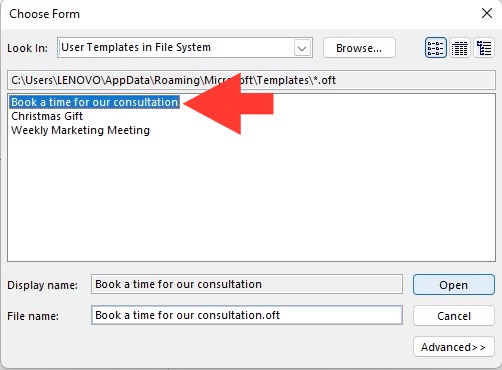Shared Outlook Email templates can make your productivity skyrocket. It’s all about harmony – you create, they access, everyone wins. The primary perks? Speedy communication, uniform branding across messages, and simplified training for new team members. Plus, with real-time updates, everyone stays on the same page without the hassle of sending updated templates back and forth.
Download our 101 Advanced Excel Formulas & Functions Examples
Key Takeaways
- Create and Save Template: Compose an email in Outlook, then save it as a template (.oft) via the File tab > Save As > Outlook Template.
- Share Template: Locate the saved template file (typically in C:\Users\[YourUsername]\AppData\Roaming\Microsoft\Templates), attach it to an email, and send it to recipients.
- Import and Use Template: Recipients save the .oft file, open it in Outlook via File > Open & Export > Open Outlook Data File, and use it from Home tab > New Items > More Items > Choose Form > User Templates in File System.
Table of Contents
Preparing to Import Templates into Outlook
Understanding the Requirements for Template Import
Before leaping into importing templates, make sure you’re set up for success by understanding the requirements. You’ll need TemplateManager365 or a similar add-in which unlocks the ability to manage and store templates directly within your mailbox. Verify that the version of Outlook you’re using is compatible, and ensure you have the proper permissions if you’re in a managed IT environment. A smooth import journey starts with checking these boxes.
Gathering Your Existing Templates
Round up all your brilliant go-to responses by gathering your existing email templates. This might mean compiling text files, scouring sent emails for reusable content, or asking team members to contribute their personal favorites. The goal? A treasure trove of ready-to-import templates that will serve as a foundation for your team’s email arsenal. Organize them by category or purpose for seamless access later on.
Step-by-Step Guide to Importing Email Templates
Importing Outlook templates for sharing can streamline your email communication, especially for repetitive tasks. Here are the simple steps to import and share Outlook templates:
Create an Outlook Template
STEP 1: Open Outlook and start a new email. > Compose the email with the desired content and formatting.
STEP 2: Save the email as a template: Go to the File tab. > Select Save As.
STEP 3: In the “Save as type” drop-down, choose Outlook Template (*.oft).
STEP 4: Give the template a name and save it in the default location.
Locate the Template File
The default location for saved templates is usually:
Windows: C:\Users\[YourUsername]\AppData\Roaming\Microsoft\Templates
Navigate to this location using File Explorer to find your .oft file.
Share the Template File
Attach the template file to an email:
STEP 1: Compose a new email.
STEP 2: Attach the .oft file just like you would attach any other file. > Send the email to the intended recipients.
Import the Template on Another Computer
STEP 1: Save the received template file to a known location on your computer.
STEP 2: Open Outlook and go to the File tab. > Select Open & Export and then Open Outlook Data File.
STEP 3: Navigate to where you saved the .oft file and open it.
Alternatively, you can simply double-click the .oft file to open it directly in Outlook.
Using the Imported Template
STEP 1: To use the template, go to the Home tab in Outlook.
STEP 2: Click on New Items > More Items > Choose Form.
STEP 3: In the “Look In” drop-down, select User Templates in File System.
STEP 4: Navigate to and select your imported template.
Best Practices for Managing Shared Templates
To keep your shared templates repository from turning into a wild west of words, consider these best practices:
- Organize Thoughtfully: Categorize templates by purpose or department to make finding the right one a snap.
- Keep It Fresh: Periodically review and update the content to keep it relevant and effective.
- Control Access: Manage permissions so that only authorized personnel can add or edit templates.
- Provide Training: Ensure everyone knows how to use the templates correctly to maintain brand consistency.
- Gather Feedback: Encourage the team to share what’s working or not, making refinements a team effort.
Troubleshooting Common Import Issues
Resolving Compatibility Problems
If you’re bumping into compatibility roadblocks while importing templates, it’s crucial to nip these in the bud. Start by ensuring your Outlook version aligns with what’s required by the template format or add-in you’re using. If the template still isn’t playing nice, it might be time to convert it into a more compatible file type or update your Outlook to the latest version. When in doubt, checking the add-in’s documentation or support forums can offer a treasure trove of solutions tailored to your exact issue.
Fixing Import Errors in Outlook
When you encounter import errors in Outlook, take a deep breath and tackle them methodically. First, double-check for the mundane: Is the file you’re trying to import corrupted or in the wrong format? Then, peek at the size, as oversized templates often trigger glitches. If everything checks out, reboot Outlook—it’s the classic turn it off and on again trick that sometimes works wonders. Still stuck? It’s time to reach out to customer support or your IT department. They’re the sleuths who can dive deeper into the tech mysteries.
Maximizing the Impact of Imported Templates
Customizing Imported Templates for Various Needs
Once you’ve successfully imported your templates, customize them to fit a rainbow of scenarios. You might tailor language for different audiences or update branding elements to keep with the latest style guide. Remember, versatility is key – a good template can transform from a formal proposal to a friendly check-in with a few tweaks. The magic lies in making each template feel personal to the recipient, even though it’s part of your well-oiled email machine.
Tracking and Analyzing the Usage of Shared Templates
While Outlook’s Shared Email Templates offer a brilliant way to enhance productivity, they unfortunately don’t include built-in analytics for tracking their use. This means you won’t be able to measure the response or usage of templates directly through the tool due to privacy policies. However, you can employ external methods such as tracking engagement through follow-up actions or using survey feedback to gauge the effectiveness of your templates. Keeping a pulse on your team’s most used and favored templates can help refine your approach to ensure communication remains sharp and effective.
FAQs on Importing Outlook Email Templates
What file types are supported for importing templates into Outlook?
Outlook supports the .oft (Outlook File Template) format for importing templates. These are specifically designed for use in Outlook, ensuring seamless integration with your email flow. Just be sure your template is saved in this format before you start the import process.
Can I import templates with attachments into Outlook?
Yes, you can import templates with attachments into Outlook. When creating your template, simply include the necessary attachments. Save the template, and, upon importing, the attachments will be part of it, ready to be sent along with your message.
How do shared email templates work in collaborative environments?
Shared email templates in collaborative environments work by providing a central repository of ready-to-use email formats that anyone with access can utilize. This ensures consistent communication and saves time, as team members can quickly select an appropriate template, personalize as needed, and send it off without starting from scratch for every email. It streamlines workflows and simplifies the process of sending out standard communications.
John Michaloudis is a former accountant and finance analyst at General Electric, a Microsoft MVP since 2020, an Amazon #1 bestselling author of 4 Microsoft Excel books and teacher of Microsoft Excel & Office over at his flagship MyExcelOnline Academy Online Course.

